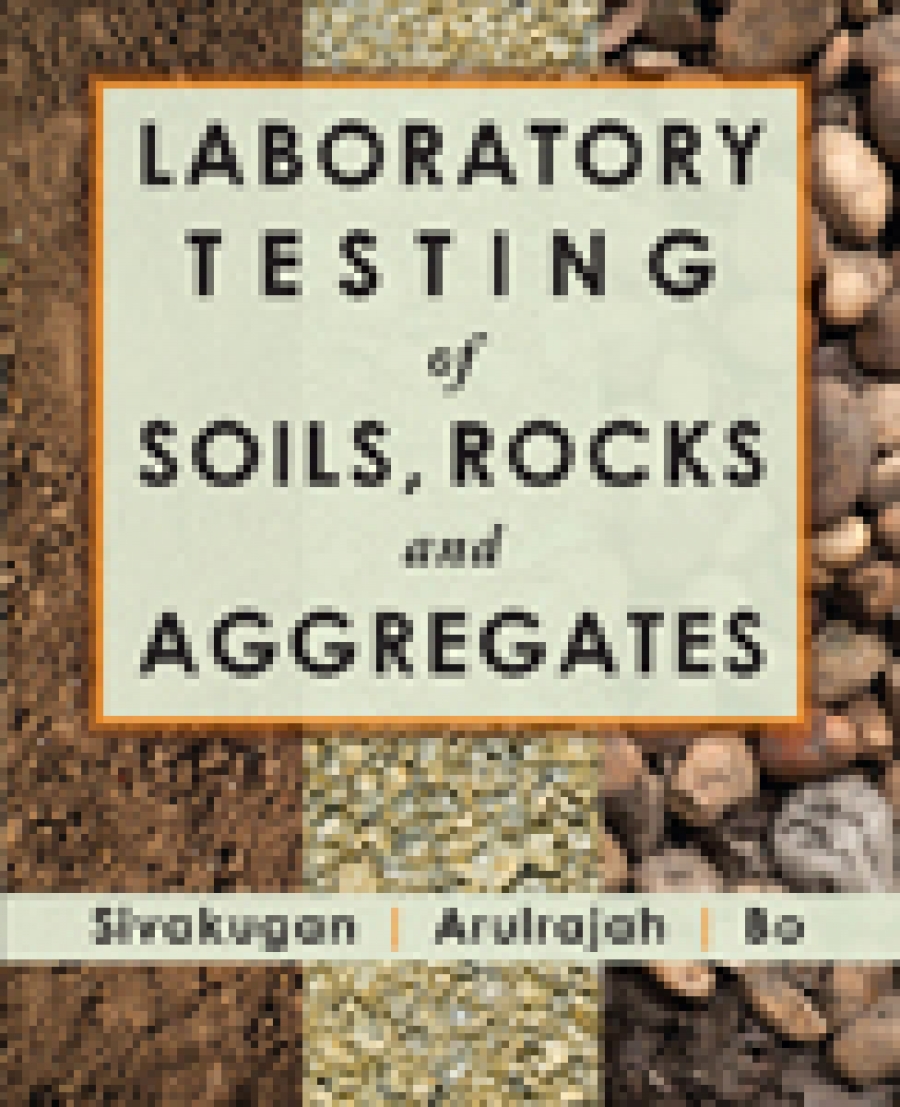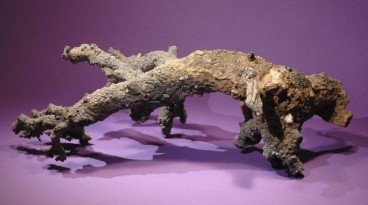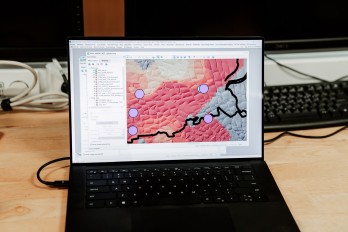
Testing rocks and aggregates are rarely covered in soil testing books and there are no separate books on rock or aggregate testing. Laboratory Testing of Soils, Rocks and Aggregates includes laboratory testing methods for most tests for soils as well as rocks and aggregates, which are becoming increasingly common in professional practice and university teaching.
Part A gives a general overview of laboratory measurements, equipment, units, safety and standards. Part B covers soil tests from grain size distribution to consolidation, triaxial and direct shear tests. Part C covers rock tests, which includes the indirect tensile strength test and point load test. Part D covers the common tests carried out routinely on aggregates, which includes the aggregate impact value test and Los Angeles abrasion test. Each test consists of the following descriptive parts: Objective, Standards, Introduction, Procedure, and Cost. References are made to ASTM International (ASTM), Australian (AS), British (BS) and International Society of Rock Mechanics (ISRM) standards and any differences are noted.
Source: J. Ross Publishing
Want to read more like this story?
Laboratory Testing
Apr, 21, 2020 | EducationLaboratory testing is an integral part of geotechnical engineering research and practice. A well...
Soil Dynamics Testing in the Laboratory
Sep, 05, 2019 | EducationSoil dynamic laboratory tests are conducted on specimens retrieved from the area of interest, and...

GEO5 Laboratory
Jan, 12, 2024 | SoftwareShear Strength of Soils
May, 13, 2019 | EducationShear strength is defined as the maximum shear stress that the soil may sustain without experienci...

Datgel Lab Tool
Mar, 02, 2022 | Software
Understanding and Conducting Helical Pile Load Tests
Feb, 23, 2023 | NewsThe only way to guarantee a pile will carry the load is with a load test. Learn about types of load...

Point Load Test
Aug, 10, 2020 | EducationIntroduction Point Load (PL) is a test that aims at characterizing rock materials in terms of s...

Splitting Tensile Strength Test (Brazilian)
Aug, 10, 2020 | EducationIntroduction The Brazilian Test is a laboratory test conducted in rock mechanics to indirec...

5 Questions about Load Tests on Helical Piles [Answered]
Feb, 09, 2022 | NewsHelical pile installers and designers get this question all the time: “Do I need to do full scale l...
On This Day
April 19th 1999
READ MORE
Trending

Earthquakes can trigger seismic events on the opposite side of Earth

South Asia’s first underwater tunnel inaugurated in Bangladesh

Fulgurite: A rare phenomenon

Richat: The Giant Blue Eye of Africa

Rockfall in South African gold mine: 4 workers dead

Landslides hit Indonesian villages on Sulawesi island

Dubai floods as it receives more than yearly precipitation in one day

